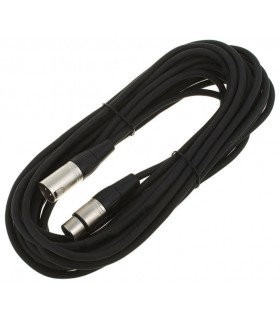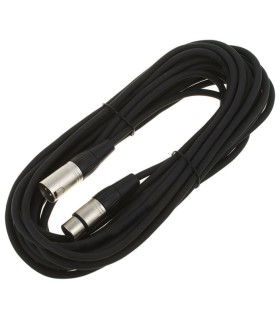
Wirings Sound and Video
Sale of audio and video cabling wholesale
Errebishop is a leading company in the wholesale of audio and video cabling.
We have been working in the field for more than twenty years and besides dealing with the distribution of electrical material, we also produce, for the same sector, components of more common use, including audio and video cabling managing the wholesale.
The wholesale of audio and video cabling extends to all products that are optimal for the proper functioning of equipment and devices that reproduce sound and images.
Our suppliers are the most reliable and important manufacturers in the world, so we can guarantee our customers excellent prices, competitive for both small and large quantities.
In addition, all items are manufactured to the highest safety standards for their intended use and are available in a wide range of variants.
What are Audio and Video Cabling
Audio and video cabling is mainly cables and other more specific components that allow electrical or electronic equipment intended for the transmission of sound and/or images to be interconnected with each other or with other auxiliary equipment.
Audio and video cabling items are therefore indispensable for transmitting an audio or video signal, or both, from a source (a stereo, a television set, a microphone, etc.).
To give a very simple example, it is enough to think that a television set would be completely useless without the corresponding audio and video cabling items, or with items made incorrectly because it would be impossible to transmit sounds and images to the surrounding environment.
Consequently, it can be said that, in order to optimise the performance of a good source, it is always advisable to use quality components.
This does not mean that they have to be expensive, but that they have adequate characteristics for their function and are made of suitable materials.
In addition, each device needs certain audio and video cabling accessories, so these accessories are not all the same, but differ in function, size and the type of plug they are associated with.
Correctly connecting cables and other audio and video cabling items is not very difficult with everyday electrical equipment, but in a professional environment it can be a more complex operation, so you need to pay particular attention and carefully consult instructions or user manuals.
How Audio and Video Wiring Works
In order to understand how audio and video cabling works, it is necessary to start with a clarification: cables are defined as "passive components" and, in general, their function is to guarantee the flow and transmission of a given signal, trying not to alter it. This is why they play a fundamental role in an audiovisual system.
It can be said that audio and video cabling work in a fairly similar way, but they are characterised by elements that determine substantial differences.
In both cases, both audio and video cabling connect sound and/or visual devices, allowing a source, through the passage of current, to reproduce its signals in the environment, on a device, or on a surface (as in the case of projectors).
Generally, the most commonly used conductor material in the construction of these types of cabling is copper, although there are also items made of aluminium, silver, carbon fibre and hybrid cables. The more sophisticated and high quality the conducting material, the less the signal transmission will be altered.
Every audio/video device necessarily has one or more sockets, also called 'ports', with different characteristics and functions.
Each port must be connected to a specific cable for signal transmission.
If, on the other hand, the port of a device is used to send (via cable) its own signal to another device, then it will be called an "output", and the port of the device that is to receive the cable will be called an "input". Some sockets can be both inputs and outputs, depending on the cable used.
In any case, it is easy to know whether the port of an appliance is an input or an output: just look at the symbol which in many cases can be found in the immediate vicinity, i.e. an arrow pointing in either direction.
Areas of use for audio and video cabling
Audio and video cabling can be used in a variety of contexts, but they are all used in contexts where there is a need to transmit images and/or sound to the surrounding environment.
Nowadays, with the increasingly rapid development of new technologies, audiovisual stimuli are increasingly present in our lives, to the point that many times we do not even notice them.
As a result, it goes without saying that there are a great many different types of cabling used in a wide variety of contexts, ranging from the domestic sphere (e.g. connection cables for televisions, stereo computers, etc.) to the urban sphere (e.g. connection cables for broadcasting announcements in stations or airports) to more specific and sectoral contexts.
Probably the sector in which it is possible to find a greater use of audio and video cabling is the artistic/ludic sector.
Musicians, in fact, are among the biggest users of these devices. And let's not forget the professions such as audio engineers, videomakers, photographers, but also entertainers and speakers, who need high-performance microphones and speakers to do their jobs properly.
Audio and video cabling is becoming more and more popular, especially with the new professional figures that are emerging every day on the job market and the new media market.
Types of audio and video cabling
There are different types of audio and video cabling, divided by function and specific characteristics.
- Power cable:
The power cable connects the amplifier to the loudspeakers. It is usually larger than the other cables because, as it carries non-negligible current flows, it must avoid dissipating too much power in the form of heating or in the form of voltage drop along the conductor.
- Signal cable:The signal cable carries the audio signal from the source (mp3 player, cd player, etc.) to the integrated stereo amplifier or, where present, to the preamplifier. In this case, the current carrying capacity is less, so the cable diameter can also be very small.
The signal cable is classified as analogue or digital according to the type of signal it transmits:
- Analog cables, both audio and video, transmit visual and sound impulses in the form of variable electrical signals. This makes them more susceptible to interference phenomena when the electrical signal is recorded or transmitted from one device to another.
- Digital cable (electrical or optical), on the other hand, carries signals in digital, i.e. digital format. In addition, a digital cable is capable of transferring signals from several channels simultaneously. Therefore, a connection between two devices is usually made with a single digital cable.
Whether they are analogue or digital, signal or power cables, it is clear that the higher the quality of the cables, the clearer the signal transmission will be.



















